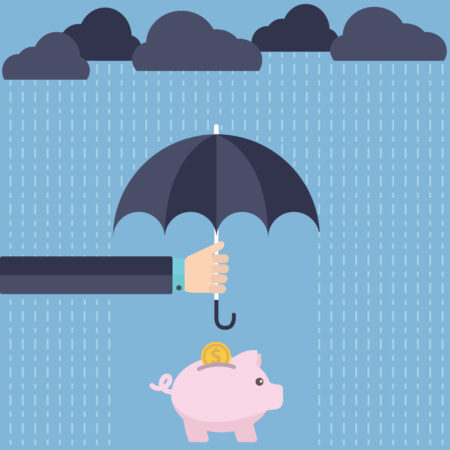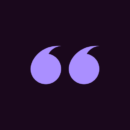USE A DATA ANALYTICS AND MARKET INTELLIGENCE STRATEGY
One strategy I employ to predict future trends and navigate our business accordingly is a combination of data analytics and market intelligence.
We invest in cutting-edge analytical tools that allow us to gather and analyze vast amounts of data from various sources, including player behavior, market trends, and competitive landscape. This data-driven approach provides us with insights into emerging patterns and potential shifts in the industry.
But numbers alone aren’t enough. We also actively engage with the iGaming community, attend industry conferences, and collaborate with thought leaders and innovators. This helps us stay abreast of technological advancements, regulatory changes, and consumer preferences.
Athina Zisi, Chief Operations Officer, Energy Casino
TAKE A QUALITATIVE-FORECASTING APPROACH
Since our business concept is innovative, there is no past data to help us see our future. That’s why we rely on the qualitative method. Here’s what we do:
- We poll industry experts to gather their independent opinions on various topics. This gives us insights into many variables related to market trends.
- We survey our sales and customer support teams. They provide us with a lot of useful information about what customers want and expect.
- We ask the clients themselves. Our goal is to constantly receive feedback from them through various channels, such as questionnaires, emails, or chat conversations.
It’s difficult to create a business forecast with no numbers, but only facts and opinions. However, this approach has been the best fit for us.
Stefan Chekanov, CEO, Brosix
BE PROACTIVE AND MAINTAIN HYPER-AWARENESS
In the early days of 2018, when David Kemmerer, Mitchell Cookson, and Lucas Wyland founded a crypto tax-reporting software, many found it humorous. They said “cryptocurrency” and “taxes” shouldn’t be in the same context. Fast-forward, and now the IRS is keen on narrowing the tax-reporting gap in the digital assets realm. Sometimes it’s safe to say that success comes from seeing the future.
To achieve this, it’s crucial to continuously monitor and evaluate every change and event in the industry. For instance, if a competitor receives significant funding or a loyal customer leaves a negative review, it’s crucial to immediately formulate a response or action plan. By being hyper-aware and proactive, future opportunities and challenges can be anticipated.
David Kemmerer, Co-founder and CEO, CoinLedger

RUN CRISIS SIMULATIONS FOR FUTURE PREPAREDNESS
Years ago, I faced a sudden market shift that caught my agency off-guard. The lesson was bitter but invaluable. Since then, I’ve incorporated crisis simulations into our annual planning.
We dream up various potential market crises, from technology breakdowns to major competitor moves. Then, we strategize our response. It’s like a rehearsal for the unknown. Last year, when a major client was mulling over cutting back on SMS campaigns, our simulation had already prepped us for it. Instead of panicking, we pivoted smoothly, proposing a blended strategy. Today, they’re one of our most loyal partners.
Josh “Snow” Elizetxe, Founder, Customer Feedback
TREND-SPOT THROUGH RESOURCES
Seeing the future isn’t about clairvoyance; it’s about recognizing the adaptive nature of the business landscape and having the tools to navigate it. As a business leader, understanding the future means constantly fine-tuning one’s ability to envision possibilities, prepare for uncertainties, and adapt to changes.
One of the most practical strategies I’ve found useful in this quest is to immerse myself in trend-spotting magazines and resources. These platforms provide a window into emerging patterns, shifts in consumer behavior, and breakthroughs in technology. They allow me to glean insights and anticipate changes before they become mainstream.
This doesn’t just offer a competitive edge. It empowers the business to stay relevant, evolve, and consistently meet the shifting needs and expectations of its audience. The future might be uncertain, but with the right tools and mindset, it’s something we can embrace and thrive within.
Rafael Sarim Özdemir, Founder and CEO, Zendog Labs
EMBRACE AMBIGUITY AND ATTEND CONFERENCES
As a business leader, I use several methods to stay ahead of the curve and effectively forecast the future for myself and my business. For example, I regularly attend industry conferences—even though these are not always specifically related to my own field—as a strategy to gain insight and inspiration from experts in other fields.
This helps me better assess potential shifts in my own field, as well as to make broader predictions about trends that could have an impact on my business down the line. In addition to this, I think it’s important to feel comfortable with ambiguity and risk; by embracing uncertainty instead of trying to simply plan everything out step by step, I’m better prepared when unforeseen opportunities or challenges arise.
Tasia Duske, CEO, Museum Hack
TRY CONVERSATIONAL AI TREND MONITORING
One method I’ve personally found invaluable in forecasting the future is conversational AI trend monitoring. I recall a time last year when our analytics hinted at a surge in negative customer feedback for a client. By leveraging chatbot data and insights from online discussions, we recognized a pattern: Customers felt unheard.
Before it became a glaring issue, we proactively implemented changes, keeping our client’s reputation intact. By paying attention to these conversational trends, I’ve been able to not just react, but proactively shape the narrative for our clients.
Alexandru Contes, Co-founder, ReviewGrower
BE OPEN-MINDED WITH DATA INTERPRETATION
Being open and removing your built-in filters is key in forecasting the future. An open mind, when interpreting data, allows you to think creatively and ultimately provides a broader outlook for the future of your business.
Data needs to be analyzed and interpreted before it’s of any benefit in your forecast. Filtering data based on biases devalues its reliability, eliminating or dulling down potential long-term trends or risks.
Geoffrey Bourne, Co-founder, Ayrshare

PLAN FOR A RAINY DAY
Wouldn’t it be great if we all had a crystal ball that could tell us what would happen in the future? As a business owner, this would be a blessing, but unfortunately, there’s no such thing. However, there are ways to future-proof your business, starting with planning for a rainy day.
As a business owner, you learn quickly to expect the unexpected. If you don’t learn that, you will not be a business owner for more than a year. Always ensure that you’re saving for a rainy day by allocating extra capital for unexpected events. This could be an increase in rent, perhaps some of your equipment needs repair, or maybe the contractor that helped you with web design charges more than you expected.
Having the extra money will save you from having to dig too far into company revenue. Your future self will thank you when they don’t have to subtract from the bottom line because of ill planning.
Alex Mastin, CEO and Founder, Home Grounds
EXPLORE WEAK SIGNALS FOR TRENDS
As a business leader, one strategy I utilize to forecast the future for myself and my business is by exploring weak signals. Weak signals are compelling, yet subtle, indications of potential trends or changes that might significantly impact the industry or market in the years to come.
This method involves keen observation and analysis of obscure data points, such as emerging consumer behaviors, technological advancements in niche industries, cultural shifts, or non-mainstream publications discussing unique perspectives.
For instance, if I notice a growing interest among young consumers toward sustainable and eco-friendly practices through their engagement with lesser-known blogs focused on sustainable living, it could indicate an upcoming trend influencing purchasing decisions.
By identifying these weak signals early on and connecting the dots within the larger context of my industry, I can make proactive decisions and adapt my strategies accordingly before trends become mainstream.
Steve Dinelli, Founder, MarketerInterview.com
CROWDSOURCE A TREND IDENTIFICATION
One way I gauge the future, especially in our fast-paced, web-scraping sector, is through crowdsourced trend identification. For instance, a couple of years back, I noticed a surge in forum discussions about the importance of real-time data extraction. Instead of solely relying on expert opinions, I turned to our user community. I posed questions, ran polls, and gathered firsthand insights.
This grassroots feedback revealed a growing demand for real-time scraping tools, prompting us to prioritize and launch our real-time data services. By tapping into the collective wisdom of our users, I’ve been able to make more informed and forward-thinking decisions for our business.
Daniel Pfeffer, CEO, Scrape Network
MAINTAIN METICULOUS RECORDS
A reliable method I employ to glimpse into the future is by maintaining meticulous records.
Establishing clear standards within my team is paramount to avoid data inconsistencies that can hinder accurate forecasting. Whether it’s deals in the pipeline or customer segment statistics, consistency is key.
This is achieved through consistent training, frequent reference to forecasts in meetings, individual deal checks, and periodic record audits. By keeping our data clean and aligned, I ensure a clearer vision of what lies ahead for both myself and my business.
Tobias Liebsch, Co-founder, Fintalent.io
MODIFY A SWOT ANALYSIS
As a business leader, viewing the future requires both introspection and foresight. One strategy I use to forecast for my and my business’ future is a modified SWOT analysis. This involves looking deeper into each of the classic strengths, weaknesses, opportunities, and threats that businesses consider, and visualizing how each factor can evolve over time.
By recognizing current trends in their earliest forms and utilizing them to inform strategic decisions, I strive to stay ahead of market shifts as they happen. This method allows me to craft more effective long-term plans with confidence that I have accounted for potential risks while capitalizing on emerging opportunities—helping ensure the success of myself and my business.
Julia Kelly, Managing Partner, Rigits
FORECAST WITH THE “LINDY EFFECT”
I am a big proponent of the Lindy effect. In short, you can determine how long something will continue to exist based on how long it has already existed. This means that timeless business truths are much more likely to persist. This keeps me away from chasing trends and allows me to focus on the 80% of things most likely to be true in the future, because they have been true for a long time.
Trevor Ewen, COO, QBench
Featured connects subject-matter experts with top publishers to increase their exposure and create quality, ready-to-publish Q&A content.















































